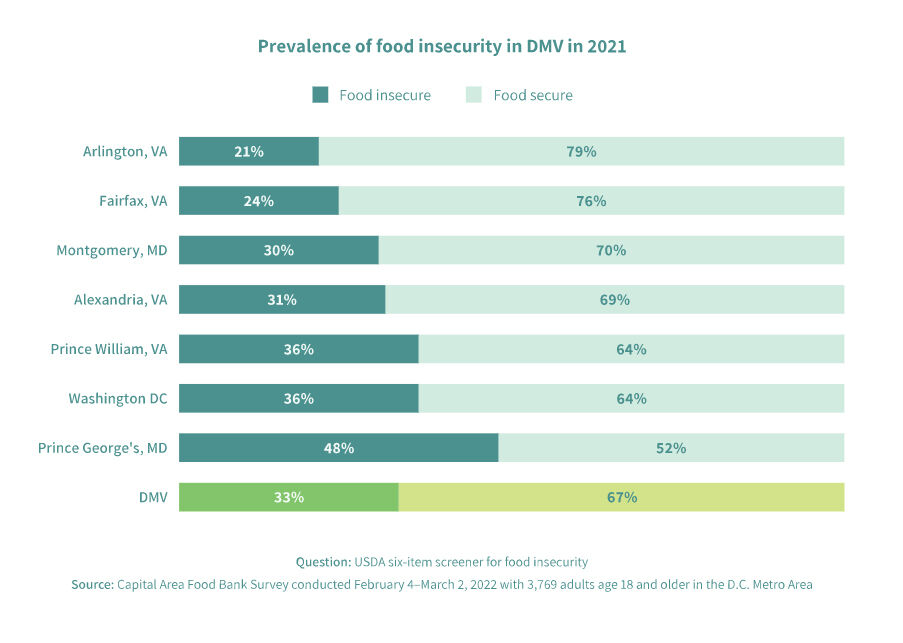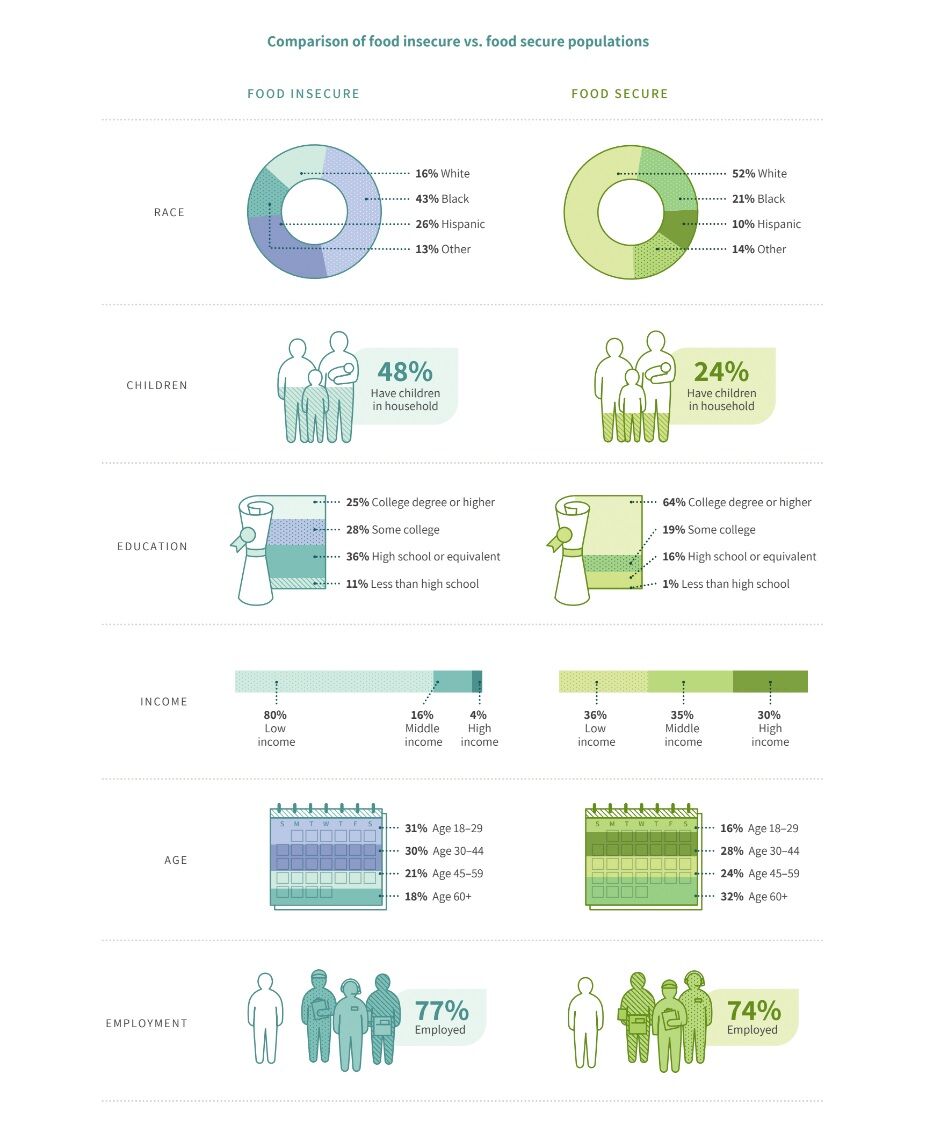A new report from the Capital Area Food Bank finds that a third of D.C.-area residents dealt with food insecurity in 2021, and that the problem is most prevalent in Maryland’s Prince George’s County.
Among the roughly 1.2 million area residents who qualified as food insecure, the food bank’s Hunger Report found that half of that group are classified as “severely food insecure.”
Food insecurity is determined by how respondents answer a six-question survey from the U.S. Department of Agriculture. It includes questions about how often a household can’t afford to buy more food, how often the household can’t afford to eat balanced meals, and how often a household had to skip or cut meals due to financial reasons.
Those who are severely food insecure have regular disruptions to the size or frequency of their meals.
The Capital Area Food Bank said that the region’s food insecurity was most prevalent in Prince George’s County, Maryland — where 48% of residents faced food insecurity.
Thirty-six percent of residents in D.C. and Prince William County, Virginia, also reported experiencing food insecurity last year.

The report found that roughly half of the households who were food insecure also had kids at home (48%). Food insecurity was higher among Hispanic (55%) and Black (50%) residents compared to white residents (13%).

Even though young adults aged 18 to 29 only make up 21% of the general population, the report also found that they represented 31% of the population experiencing food insecurity.
Most alarming is that the situation for the food insecure is facing an uphill climb: the report said that nearly half of food-insecure adults reported that their household income is lower than what it was in March 2020. And 71% of food-insecure individuals said employment hardships — from reduced hours and wages, or being laid off — impacted their lives, according to the report.
This is the third Hunger Report put out by the Capital Area Food Bank, but the first of its kind where it partnered with NORC at the University of Chicago to conduct a survey on food insecurity.
The Capital Area Food Bank survey was conducted from Feb. 4 to March 2, 2022 with 3,769 adults aged 18 and older in the D.C. Metro area.








